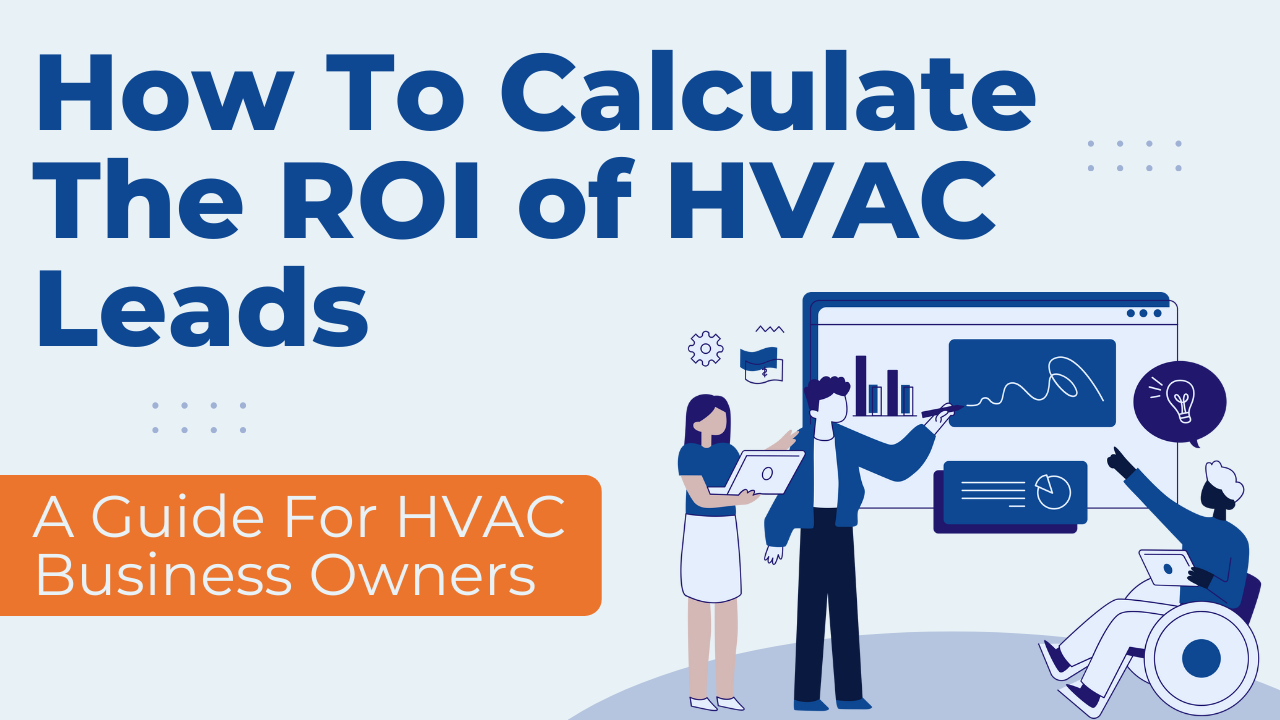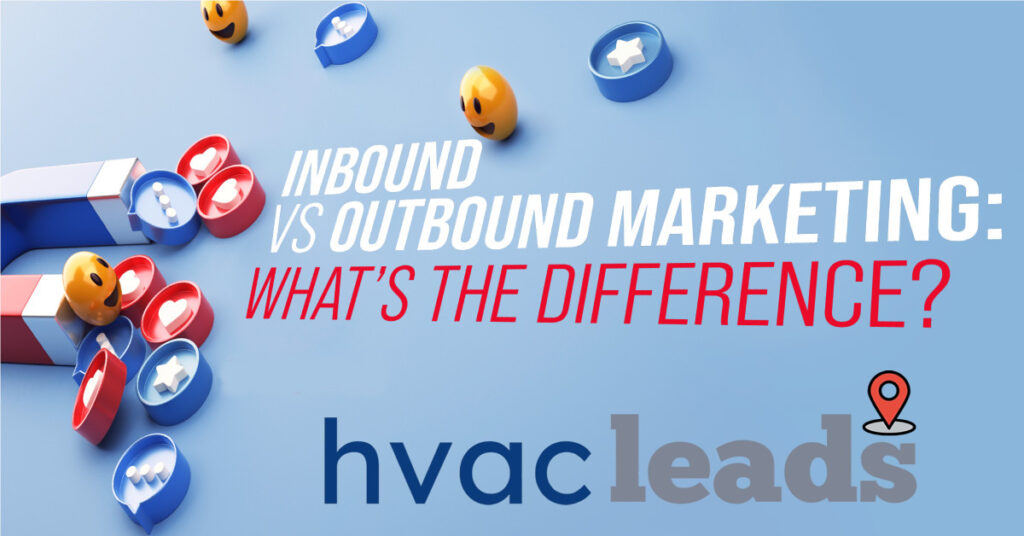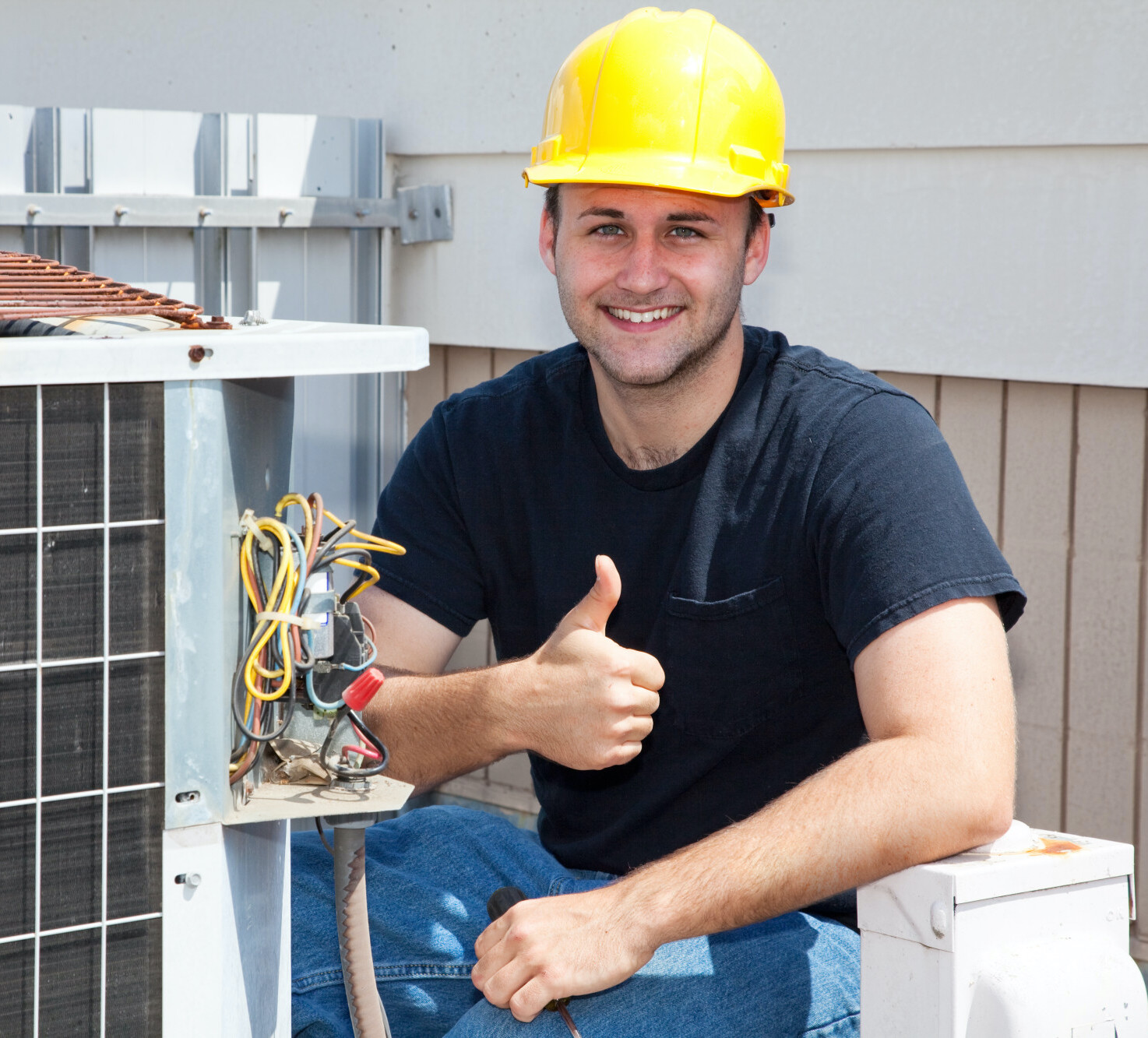
Running an HVAC service business can be challenging, especially in competitive markets like HVAC which is why understanding how to calculate the ROI of HVAC leads is essential. By analyzing the return on investment from your lead generation efforts, HVAC business owners can pinpoint which strategies yield the highest profitability, identify areas for improvement, and make data-driven decisions to maximize their marketing dollars.
In this blog post, we are going to do a deep dive into calculating the ROI of HVAC Leads. For HVAC contractors that have had or think they had so-so experiences buying HVAC leads or paying advertising platforms this will absolutely help you.
Formula To Calculate ROI from HVAC leads:
This simple formula allows HVAC contractors to plug in their specific metrics and get a clear understanding of their ROI for lead generation campaigns. It will literally change your life and your business when you to learn how to calculate the ROI of HVAC leads.

Here’s a chart. The numbers look inflated but they’re not. It really depends on your overhead, payroll, etc. and what you charge customers. We will get into that next.

Okay, let’s break down the math with real numbers so you can see for yourself.
1. Average Lead Cost:
-
Low end: $75
-
High end: $200
-
Average: ($75 + $200) / 2 = $137.50
2. Revenue from Service Calls:
-
Average service call invoice: $650
3. Revenue from Installations:
-
Low end installation: $7,000
-
High end installation: $15,000
-
Average installation: ($7,000 + $15,000) / 2 = $11,000
4. Leads to Customers Conversion Rate:
-
50% of leads become customers. This means for every 100 leads, 50 become customers.
5. Customers to Installations Conversion Rate:
-
3 out of 10 customers result in an installation. This is a 30% conversion rate.
6. Calculating Revenue Per Lead:
This is the most crucial calculation. We need to consider both the service call revenue and the potential installation revenue generated from a single lead.
-
Service call revenue per lead: 50% (lead to customer conversion) * $650 (service call invoice) = $325
-
Installation revenue per lead: 50% (lead to customer conversion) * 30% (customer to installation conversion) * $11,000 (average installation) = $1,650
-
Total revenue per lead: $325 (service call) + $1,650 (installation) = $1,975
7. Calculating Profit Per Lead:
Now that we know the revenue generated by each lead, we can calculate the profit.
-
Profit per lead: $1,975 (revenue per lead) – $137.50 (average lead cost) = $1,837.50
8. Calculating Return on Investment (ROI) per Lead:
ROI shows the return generated for every dollar invested.
-
ROI per lead: ($1,837.50 (profit per lead) / $137.50 (average lead cost)) * 100 = 1336.36%
Example Scenario:
Let’s say an HVAC contractor spends $1,375 on lead generation, resulting in 10 leads.
-
With a 50% lead to customer conversion, they get 5 customers.
-
With a 30% customer to installation conversion, they get 1.5 installations (we’ll round down to 1 for this example, but over time, it averages out).
-
Revenue from service calls: 5 customers * $650/service call = $3,250
-
Revenue from installation: 1 installation * $11,000/installation = $11,000
-
Total revenue: $3,250 + $11,000 = $14,250
-
Profit: $14,250 (total revenue) – $1,375 (lead generation cost) = $12,875
-
ROI: ($12,875 / $1,375) * 100 = 936.36%
Key Takeaways for HVAC Contractors:
-
Lead generation is a valuable investment. Even with varying lead costs and conversion rates, the potential return is significant.
-
Focus on improving conversion rates. Even small improvements in lead-to-customer or customer-to-installation conversion can significantly impact profitability.
-
Track your metrics. Consistently monitor lead costs, conversion rates, and average invoice values to understand the effectiveness of your marketing efforts.
-
Understand the long-term value of a customer. The potential for future service calls and referrals increases the overall value of each acquired customer.
By understanding these calculations, HVAC contractors can make informed decisions about their marketing investments and accurately assess the value a HVACR lead generation agency brings to their business. You’d be surprised how many HVAC contractors don’t know how to calculate the ROI of HVAC leads and just wing it. When you get dialed in and learn this stuff it’s so self empowering because you really know what you’re doing. It’s not just about that I know how to fix or install anything, it’s more about running and scaling a profitable HVAC business so you don’t have to do all the work anymore.
Additional Data Points:
-
Average Service Call Profit Margin: Let’s assume a 60% profit margin on service calls (this accounts for technician labor, parts, truck expenses, etc.).
-
Installation Profit Margin: Let’s assume a 30% profit margin on installations (higher material costs and potentially subcontracting can reduce the profit margin compared to service calls).
-
Customer Lifetime Value (CLTV): Let’s assume an average customer stays with the HVAC contractor for 5 years and has one service call per year.
Revised Calculations:
-
Average Lead Cost: Remains the same at $137.50
-
Profit from Service Calls (per service call): $650 (service call invoice) * 60% (profit margin) = $390
Additional Data Points:
-
Average Service Call Profit Margin: Let’s assume a 60% profit margin on service calls (this accounts for technician labor, parts, truck expenses, etc.).
-
Installation Profit Margin: Let’s assume a 30% profit margin on installations (higher material costs and potentially subcontracting can reduce the profit margin compared to service calls).
-
Customer Lifetime Value (CLTV): Let’s assume an average customer stays with the HVAC contractor for 5 years and has one service call per year.
Revised Calculations:
-
Average Lead Cost: Remains the same at $137.50
-
Profit from Service Calls (per service call): $650 (service call invoice) * 60% (profit margin) = $390
-
Profit from Installations (per installation): $11,000 (average installation) * 30% (profit margin) = $3,300
-
Leads to Customers Conversion Rate: Remains at 50%
-
Customers to Installations Conversion Rate: Remains at 30%
-
Calculating Profit Per Lead:
-
Service call profit per lead: 50% (lead to customer conversion) * $390 (service call profit) = $195
-
Installation profit per lead: 50% (lead to customer conversion) * 30% (customer to installation conversion) * $3,300 (installation profit) = $495
-
Total profit per lead (from initial contact): $195 + $495 = $690
-
-
Calculating Return on Investment (ROI) per Lead (from initial contact):
-
ROI per lead: ($690 (profit per lead) / $137.50 (average lead cost)) * 100 = 501.82%
-
-
Calculating Customer Lifetime Value (CLTV) Profit:
-
Annual service call profit per customer: $390 (profit per service call) * 1 (service call per year) = $390
-
Total service call profit over 5 years: $390/year * 5 years = $1,950
-
Adding initial profit to CLTV: $1,950 (CLTV from service) + $690 (initial profit) = $2,640
-
-
Calculating ROI including CLTV:
-
ROI per lead (including CLTV): ($2,640 (total profit including CLTV) / $137.50 (average lead cost)) * 100 = 1919.09%
-
Revised Example Scenario (with 10 Leads):
-
Spent on leads: $1,375
-
5 customers (50% conversion)
-
1.5 Installations (round to 1 for this example)
-
Profit from service calls: 5 customers * $390/service call = $1,950
-
Profit from installations: 1 installation * $3,300/installation = $3,300
-
Total initial profit: $1,950 + $3,300 = $5,250
-
CLTV profit (5 customers over 5 years): 5 customers * $1,950/customer = $9,750
-
Total profit including CLTV: $5,250 + $9,750 = $15,000
-
ROI (initial): ($5,250 / $1,375) * 100 = 381.82%
-
ROI (including CLTV): ($15,000 / $1,375) * 100 = 1090.91%
Key Improvements and Takeaways:
-
Profit margins provide a more accurate picture: Using profit margins instead of just revenue gives a much clearer understanding of actual earnings.
-
CLTV highlights long-term value: Including CLTV demonstrates the significant long-term return on acquiring a customer. This is crucial for HVAC businesses, as customer retention is highly valuable.
-
ROI is even more compelling: By including profit margins and CLTV, the ROI becomes even more impressive, further justifying the investment in lead generation.
By incorporating these additional data points, calculating your ROI of HVAC leads become much more realistic and provide a more compelling argument for HVAC contractors to invest in lead generation and understand the value of a lead generation agency. This also helps to understand the importance of customer retention.
It’s important to base these calculations on realistic data. Here’s how we arrived at those numbers:
Service Call Invoice ($650): This is based on a combination of factors:
Industry averages: Research from sources like ServiceTitan, a popular HVAC software company, and various HVAC industry publications, indicate that the average service call can range from $300 to $800 or more, depending on the complexity of the issue, parts needed, and location.
Geographic variations: Costs are higher in metropolitan areas with higher labor costs and overhead.
Type of service: A simple diagnostic visit will be on the lower end, while a repair requiring parts replacement will be on the higher end. $650 is a reasonable mid-range estimate.
Installation Cost ($7,000 – $15,000): This range is also based on industry data and considers:
Type of system: A simple AC unit replacement will be on the lower end, while a full furnace and AC replacement with ductwork modifications will be on the higher end.
Size of the home: Larger homes require more powerful and expensive systems.
Efficiency of the system: Higher-efficiency units cost more upfront but offer long-term energy savings.
Brand and features: Premium brands and advanced features increase the cost.
Profit Margins (60% on service calls, 30% on installations): These are also based on industry benchmarks and take into account:
Service call profit margin: This needs to cover technician labor, truck expenses (fuel, maintenance, insurance), parts, office overhead, and profit. A 60% gross profit margin is achievable for well-managed HVAC businesses.
Installation profit margin: Installations have higher material costs (the equipment itself), potential subcontracting costs (for electrical or ductwork), permits, and potentially longer project timelines, which can reduce the profit margin compared to service calls. 30% is a reasonable estimate.
Specific Sources and Further Reading:
While I don’t have a single definitive source for every number, here are some resources that provide valuable insights into HVAC pricing and profitability:
ServiceTitan: This company provides software for HVAC businesses and publishes a lot of data and insights on industry trends, including pricing and profit margins. Their blog and resources are a good source.
HVAC Industry Publications: Magazines and websites like Contracting Business, ACHR News, and The NEWS often publish articles and reports on industry benchmarks and financial performance.
RSMeans Data: This company provides cost data for the construction industry, including HVAC installations. While it’s a subscription service, it offers very detailed cost breakdowns.
HVAC Distributors and Manufacturers: These companies often have data on equipment costs and can provide insights into market pricing.
Important Note:
It’s crucial to remember that these are average figures. Actual costs and profit margins will vary depending on:
Location: Costs are higher in some regions than others.
Business model: Different businesses have different cost structures and pricing strategies.
Efficiency of operations: Well-managed businesses with efficient processes will have higher profit margins.
HVAC contractors should use these calculations as a starting point and adjust them based on their specific circumstances and local market conditions. You can identify so many areas for improvement and a realistic snapshot of your profits.
We hope this helps you understand just how powerful it is to learn how to calculate ROI on HVAC leads so you grow your revenue and profitability. A huge hat tip to you for putting in the time and making it to the end. This kind of knowledge is exactly how HVAC contractors learn to become more profitable and scale their business. If you have any questions feel free to contact us.



